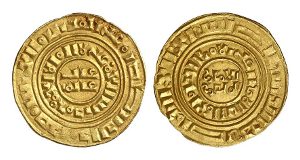Crusader coins (ca. 1095-1523)
 It is unlikely that there will be events that have had such a strong influence on the social and cultural development of the medieval world from the 11th to the 13th centuries, like the crusades and the associated founding of Christian states in Palestine and the Mediterranean.
It is unlikely that there will be events that have had such a strong influence on the social and cultural development of the medieval world from the 11th to the 13th centuries, like the crusades and the associated founding of Christian states in Palestine and the Mediterranean.
In 1095, in the French city of Clermont, Pope Urban II (1088-1099) called for the liberation of the Holy Land from the Muslims and thereby caused a wave of crusades of the high Middle Ages. The constant need for supplies led to active trade with the Crusader States, so that it was primarily beneficial to the Italian cities-republics of Venice, Florence and Genoa, which supplied the Crusaders. Of course, the ongoing war had an impact on the monetary business.
The numismatic area of the crusaders includes all the so-called coins. “Latin East”, that is, all the states of the Crusaders in Palestine and Syria: the kingdom of Jerusalem, the principality of Antioch, the county of Edessa and the county of Tripoli. Also in this area of collecting are coins of states on the islands of the Aegean Sea, founded after the crusaders conquered the Byzantine Empire (1204), and coins of the Order of St. John of Rhodes. In the images and inscriptions on the coins of the Crusaders, European, Islamic and Byzantine design elements are mixed and uniquely combined. Coins minted in gold, silver and copper.
In the interval between the first and second crusades (1099-1146), apparently, only copper coins were minted in Antioch and Edessa by the Byzantine type. After that, for some time (ca. 1150-1250) the crusaders minted silver coins according to the European model (denarius). The most memorable images on the coins of the Kingdom of Jerusalem are, for example, the image of the Tower of David, minted on coins with Baldwin III (1143-1163), and the image of the Holy Sepulcher, minted on coins under Amori IV (1163-1174). . Crusaders gold coins, minted supposedly from the 1140s, were an imitation of the Arab dinars, they had less weight, and their legend contained mistakes. In 1251, Pope Innocent IV (1243-1254) prohibited the minting of coins containing such non-Christian images. From that time on, a cross was depicted on the coins, and the inscriptions were of Christian content, of course, still in Arabic.
Immerse yourself in the history of the coinage of the full events of the era and, together with the crusaders, witness the medieval cultural exchange between East and West on the coin images!





